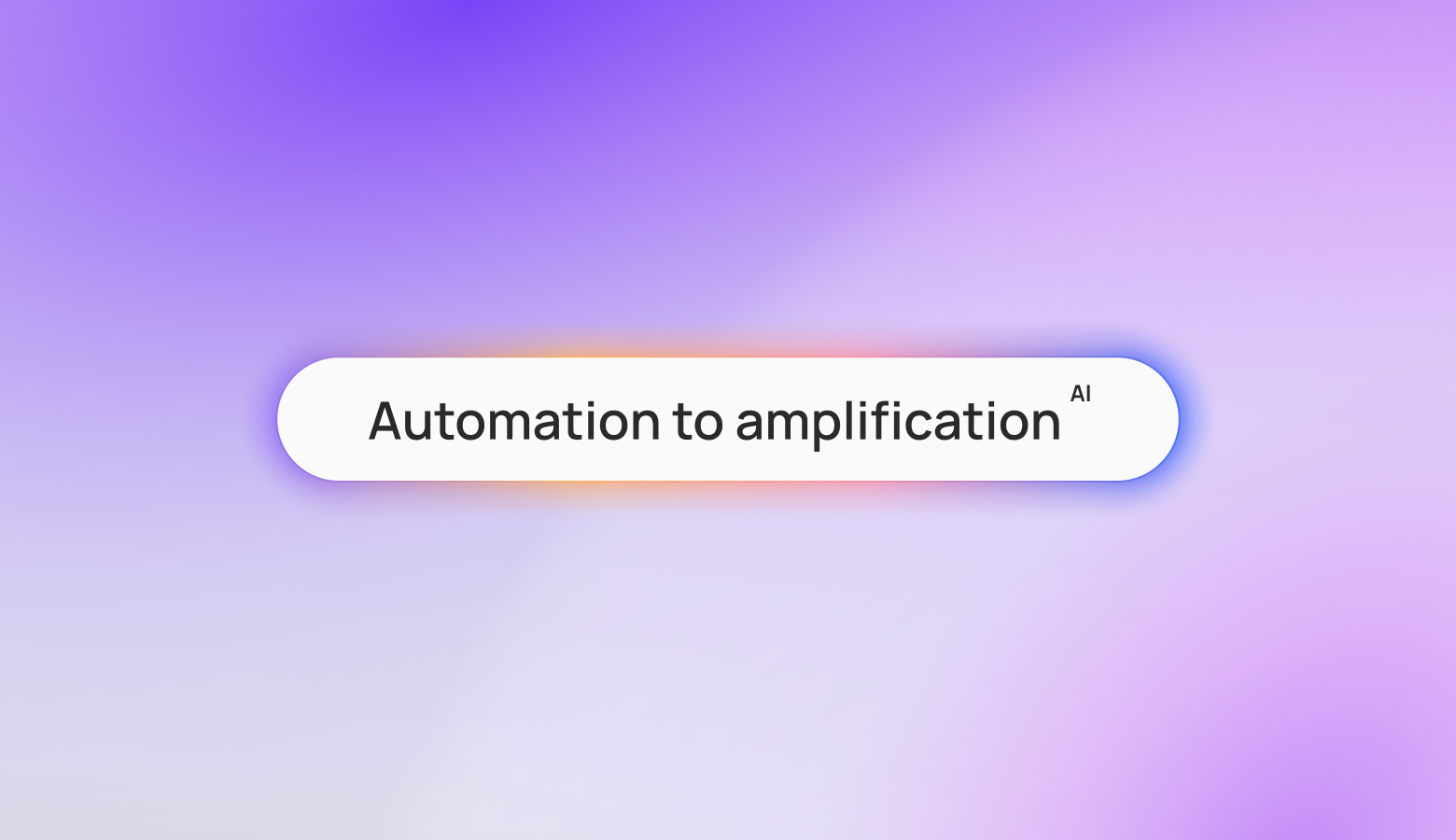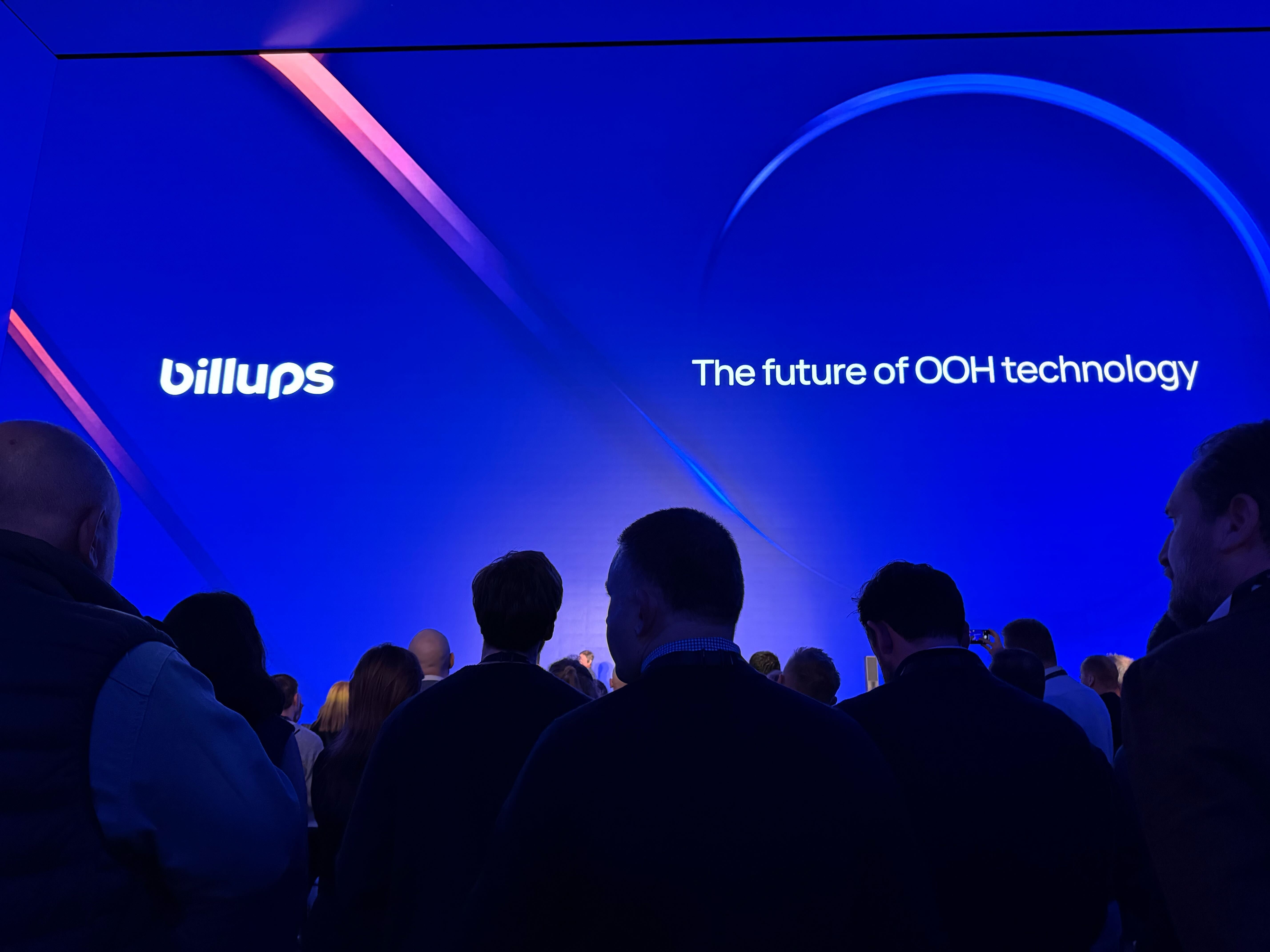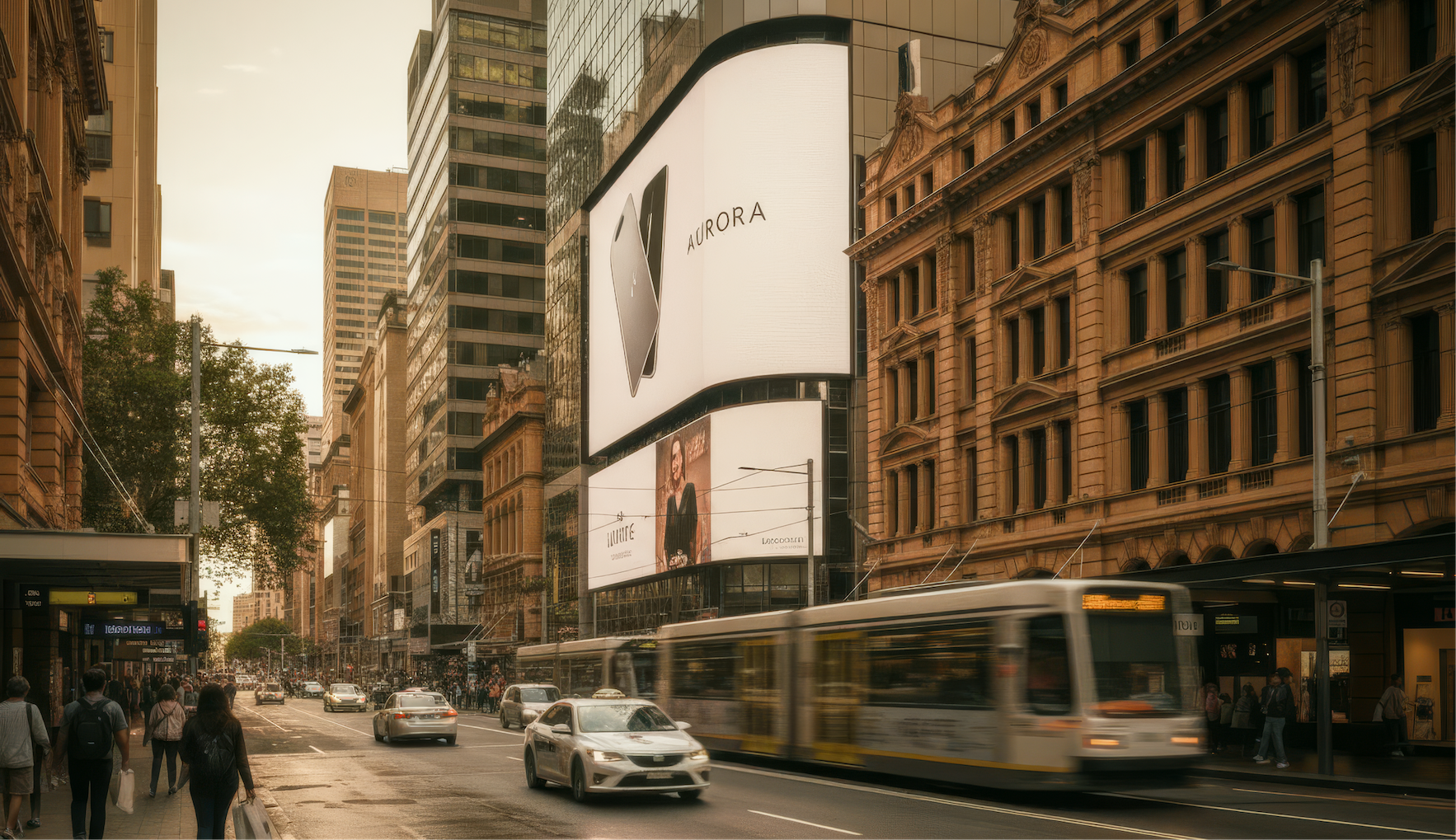OOH Advertising: The Complete Guide

Every week, the Out-of-Home (OOH) advertising units measured by Geopath across the entire US have the ability to deliver over 100 trillion impressions. That is enough for every person in the United States to see an advertisement over 300 million times. Outdoor advertising’s high reach and frequency levels coupled with its often lower cost per impression than other advertising channels make it a formidable medium.
This article will explain what OOH advertising is, when it should be used, benefits and challenges, and how you can be sure your OOH campaigns are working.
What is OOH Advertising?
OOH advertising is any advertising experienced outside of the home. Also called outdoor advertising, outdoor media and out-of-home media, this type of advertising includes a variety of formats from Billboards to Wallscapes and Posters seen during vehicular or pedestrian travel to Place-Based advertisements seen inside and outside of gas stations, convenience stores and shopping malls. OOH advertising can also be in nontraditional formats such as Street Teams, Wildpostings (permitted or guerilla) and anything else imaginable to reach consumers offline.

Types of OOH Advertising
There are many different formats and types of OOH advertising that can be found everywhere outside of your home:
- Bulletins are the most common-sized large format OOH placement. Often located on the side of busy roads and highways, they provide maximum visibility for your brand messages.
- Posters are usually found on secondary and local roads or outside of retail shops. They reach audiences locally and help to enhance program frequency.
- Wallscapes are often a high-impact form of OOH. They transform the cityscape to generate awareness in areas with high volumes of foot and vehicular traffic.
- Street furniture reaches consumers at eye level, ensuring the brand is top of mind during the audiences’ daily routines.
- Transit OOH is usually tied to public transportation systems such as rail and bus. It has the ability to reach both riders and those walking and driving past the systems. This type of media helps to increase reach and frequency in the market.
- Place-Based Advertising reaches potential customers within many different venue types such as shopping malls, convenience stores, stadiums, and more. It can be a great way to reach customers at the point-of-sale.
OOH Advertising Examples
Bulletin/Billboard
Acne Studios utilized an OOH Billboard to feature their classic Musubi Bag in a cheeky campaign. The Billboard they chose was near a retail location on Melrose in West Hollywood and facing towards a busy road. The featured creative was eye-catching with the design being readable from a distance and unobstructed from vehicular traffic.

Wallscape
Top Golf leveraged a high-impact Wallscape in a busy area of downtown Portland to capture their audience with a personal message.

Transit
Varo used Bus advertising as part of a broader OOH campaign to reach their hyperlocal target audience with a personified creative and compelling message.
-jpg.jpeg)
When Should You Use OOH Advertising?
You should use OOH advertising whenever you want to reach large groups of consumers in real-time. Outdoor advertising leverages engaging visuals and powerful messages as an effective standalone channel or as an amplification of your omnichannel marketing strategy. Advancing technologies, targeting, and measurement allow advertisers to measure how their campaigns are performing and measure the effectiveness of OOH in conjunction with and against their other marketing channels.
Outdoor campaigns should be used when you want to get above the “noise” of digital marketing channels. With continuous phone privacy updates, and the ability to pay to opt-out of ads on many digital channels, OOH stands out as a channel where your consumers cannot avoid it, and they often don’t want to. Additionally, consumers tend to notice Out-of-Home advertising more than other media channels.
OOH allows you to speak directly to your audience, helping you to attract new customers and engage your existing base. Traditionally OOH advertising was used for pure branding, but technologies have allowed it to be used for multiple purposes, including increasing sales, website visits, and app downloads.
Advantages of OOH Advertising
OOH advertising in all forms has many advantages that help it to support your campaign efforts and get your message to the world:
- Brand Exposure: OOH is traditionally known for its brand exposure. It fits into the landscape, delivering brand awareness messages to those on the move each and every day. It engages current customers and potential new customers with your brand, encouraging them to use your products or services.
- Scalability: OOH advertising is highly scalable. Brands can use one high-impact exposure, a series of smaller placements, or a combination approach to reach their audiences.
- Long Lifespan and Cannot be Blocked: OOH media has a much longer lifespan than online ads and its offline nature means that it cannot be blocked unlike most digital ads.
- Amplifies Your Other Channels: OOH can amplify the reach of your other channels by standing out in a way that encourages social sharing, generates news articles and makes more viewers want to learn more about your brand through web search.
- Reaches Audiences Just-in-Time: OOH advertising reaches people in the places they frequently visit, whether that’s on the way to work or while enjoying a leisure activity. Strategic placements allow advertisers to speak directly to their target audiences.
- Customization: Brands can customize their OOH media, not only in terms of creative, but based on target demographics, geographic targeting, and other factors.
Challenges of OOH Advertising
While OOH advertising comes with many benefits, there are some challenges.
- Measurement: It is a common misconception that OOH advertising is not measurable, but there are actually many ways to determine and analyze the effectiveness of a campaign. However, some forms of OOH advertising cannot be measured such as Experiential and some Place-Based advertising.
- Aligning Budget to Your Plan: OOH advertisers will have to set expectations against their budgets. Premium placements in tier-one markets can come with a high cost. The good news is that OOH typically offers lower CPMs than online or broadcast advertising and there are lower-cost options to strategically reach your audience. OOH specialists like Billups can help you build plans and strategies to efficiently and effectively maximize your budget.
- Timelines: OOH can have more of an extended timeline than other types of advertising. Creative is often due three to four weeks prior to posting, depending on the format. For static placements, there is also production time for printing that must be factored in. A large or complicated campaign may need as much as 12 weeks of lead time, but most campaigns need to be started six to eight weeks before they go live. One solution for a quicker turnaround would be to use Digital Out of Home (DOOH), which can usually go live within a few days if the creative file is ready to be sent to the media owner. Another consideration is creative approval which is sometimes needed from the media company or property owners before the ad can be posted.
- Relationship Management: Many OOH campaigns consist of multiple pieces of inventory in a variety of formats. It is common to execute an OOH campaign with multiple suppliers. The advertiser will have to navigate contracting and relationships with each supplier they use. In addition to that, the advertiser needs to work with a production company, and sometimes a creative company to bring their advertisements to market. Working with an OOH specialist company like Billups can help relieve the hassle of navigating multiple partnerships, as we manage many of those relationships for you, freeing up time for you to focus on other aspects of your campaign.
How Does OOH Integrate With Your Other Advertising Efforts?
OOH provides extended reach to digital campaigns, as these placements are offline, existing outside of the audience’s home and digital devices. Beyond reach, OOH touchpoints incite your audience to take action and learn more about your brand. Advertisers can leverage OOH beyond upper-funnel awareness to affect the consideration and buying phases of the funnel, allowing OOH advertisers to engineer media messaging to amplify their traditional and digital channel campaigns.
For example, an interactive and engaging placement with a relevant hashtag can generate buzz on social media, amplifying the reach of your message, a thoughtfully placed QR code can increase website visitation and app downloads, and placements advertising a product, service or discount near a point of sale can affect purchase behavior at the time and place where your audience is ready to buy.

DOOH Advertising
The use of Digital OOH (DOOH) is quickly expanding with more units available every year, providing advertisers with creative flexibility, quick turnaround times for production, and the ability to run full motion video. It also allows clients to target specific audiences through dayparting and to create timely messaging based on occurrences, triggers, or happenings.

Some of the forms of Digital OOH advertising can include:
- Digital Bulletins light up high-traffic areas with the ability to run dynamic brand messages. These large-scale digital screens are usually located on major freeways and thoroughfares to reach vehicular traffic.
- Digital Place-Based Ads attract the attention of consumers as they go about there day at places like restaurants, gas stations, and retail locations.
- Digital Street Furniture impacts pedestrian and street traffic through bus shelters, benches and other inventory.
Programmatic DOOH Advertising
Programmatic DOOH (pDOOH) allows advertisers to buy digital advertising based on impressions using unique targeting parameters to share your message across multiple platforms at once and optimize where needed. pDOOH is most efficient when utilized with help from an OOH expert to plan, buy and measure your campaign.
OOH Industry Trends & Strategies
As time marches forward, the oldest form of advertising is having a renaissance of sorts. Due to its unavoidable nature, OOH is continuing to increase in popularity with brands. Here are some of the trends you can expect to see in OOH advertising:
- More Creative: Brands seek new and innovative ways to reach, excite and engage their target audiences through OOH and integrate those efforts with those on their other marketing channels.
- More Programmatic: Many advertisers are also excited about the possibilities that programmatic advertising provides.
- More Measurement: More advanced methodologies are allowing advertisers to see the fruits of their labor through measurement.
- More Sustainable: Many brands, especially overseas, are looking for ways to make their OOH advertising more sustainable and eco-friendly.
How Can You Tell if OOH ADs Are Working?
Though there is a misconception that OOH is less measurable than other channels, the OOH rating system provides OOH advertisers with credible metrics comparable to other media channels. This allows advertisers to target similar audiences across their media mix.
Additionally, OOH specialist companies like Billups have patented technology that allows for deeper insights into how a campaign performed. Here are some examples of the kinds of reports that Billups can provide:
- Exposure shows how many individuals were exposed to a campaign based on mobile devices passing within the possible viewing area of the OOH placements for a campaign.
- Location Visitation compares pre-campaign foot traffic for designated Points of Interest (POIs) to total foot traffic during the campaign.
- Website Visitation shows how many mobile device IDs were exposed to the campaign and went on to visit the brand’s website.
- Brand Awareness determines audiences’ opinions of brands and how they might have changed as a result of the OOH campaign through pre and post-campaign surveys.
- Sales reports measure which device IDs were exposed, and matched to the users who converted online or offline by making a purchase.
- Audience Profile creates a profile for those who were exposed to the OOH campaign based on demographics and behavioral traits such as sex, HHI, purchase behavior, ethnicity, etc.
- Placement Indexing ranks the OOH placements based on exposure to a specific location or POI.
Getting Started With an OOH Campaign?
Ready to get started on an OOH Campaign? Billups' experienced team of media specialists and data scientists are here to help you with everything related to your campaign from conception to production to analyzing your results. Contact us today!



